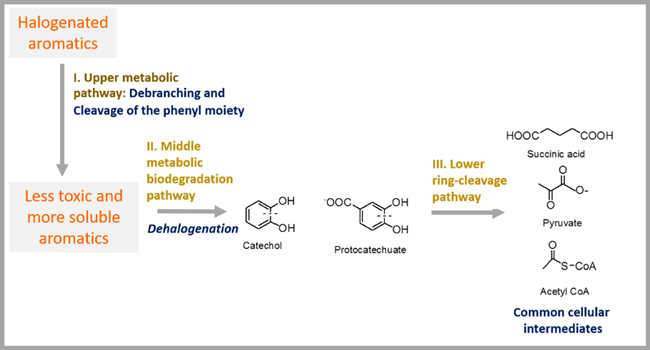Microbial degradation of halogenated aromatics: molecular mechanisms and enzymatic reactions

Biological degradation of halogenated aromatics has been highlighted. The review provides recent in-depth knowledge in the molecular mechanisms of the enzymatic reactions for degrading halogenated aromatics which naturally occur in various microorganisms. In the biodegradation process, there are three main steps of upper, middle and lower ring cleavage metabolic pathways that ultimately convert the toxic halogenated aromatics to common metabolites in cells. The enzymatic cascade and enzymes involved in aromatic degradations are useful for bioremediation, new metabolic design routes and synthetic biology for sustainable bioprocesses.
Reference:
Pimviriyakul P, Wongnate T, Tinikul R, Chaiyen P. Microbial degradation of halogenated aromatics: molecular mechanisms and enzymatic reactions. Microb Biotechnol. 2020 Jan;13(1):67-86. doi: 10.1111/1751-7915.13488.
| Relevant SDGs | |
|---|---|
 |
|
| BC investigator | |
 Asst. Prof. Ruchanok Tinikul Asst. Prof. Ruchanok Tinikul |
